Related Research Articles

Eskimo is an exonym that refers to two closely related Indigenous peoples: Inuit and the Yupik of eastern Siberia and Alaska. A related third group, the Aleut, who inhabit the Aleutian Islands, are generally excluded from the definition of Eskimo. The three groups share a relatively recent common ancestor, and speak related languages belonging to the family of Eskaleut languages.

The Northwest Territories is a federal territory of Canada. At a land area of approximately 1,127,711.92 km2 (435,412.01 sq mi) and a 2021 census population of 41,070, it is the second-largest and the most populous of the three territories in Northern Canada. Its estimated population as of the second quarter of 2024 is 44,920. Yellowknife is the capital, most populous community, and only city in the territory; its population was 20,340 as of the 2021 census. It became the territorial capital in 1967, following recommendations by the Carrothers Commission.
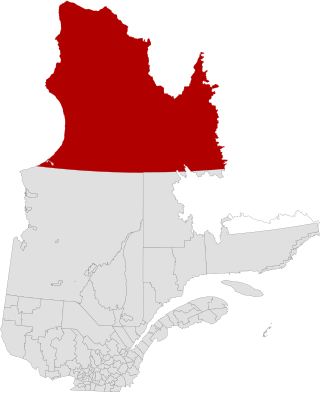
Nunavik is an area in Canada which comprises the northern third of the province of Quebec, part of the Nord-du-Québec region and nearly coterminous with Kativik. Covering a land area of 443,684.71 km2 (171,307.62 sq mi) north of the 55th parallel, it is the homeland of the Inuit of Quebec and part of the wider Inuit Nunangat. Almost all of the 14,045 inhabitants of the region, of whom 90% are Inuit, live in fourteen northern villages on the coast of Nunavik and in the Cree reserved land (TC) of Whapmagoostui, near the northern village of Kuujjuarapik.
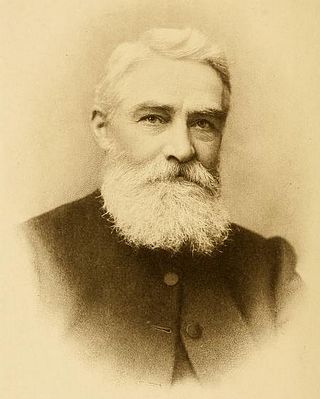
Edmund James Peck, known in Inuktitut as Uqammaq, was an Anglican missionary in the Canadian North on the Quebec coast of Hudson Bay and on Baffin Island. He founded the first permanent mission on Baffin Island, Nunavut. He developed Inuktitut syllabics, derived from the Cree syllabary and the first substantial English-Inuktitut dictionary.

Chipewyan or Dënesųłinë́, often simply called Dëne, is the language spoken by the Chipewyan people of northwestern Canada. It is categorized as part of the Northern Athabaskan language family. It has nearly 12,000 speakers in Canada, mostly in Saskatchewan, Alberta, Manitoba and the Northwest Territories. It has official status only in the Northwest Territories, alongside 8 other aboriginal languages: Cree, Tlicho, Gwich'in, Inuktitut, Inuinnaqtun, Inuvialuktun, North Slavey and South Slavey.

The Dene people are an Indigenous group of First Nations who inhabit the northern boreal, subarctic and Arctic regions of Canada. The Dene speak Northern Athabaskan languages and it is the common Athabaskan word for "people". The term "Dene" has two uses:
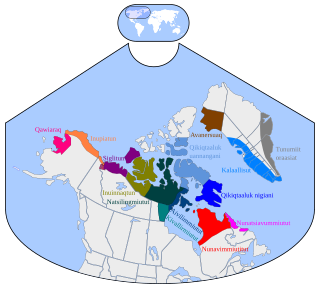
Inuktitut, also known as Eastern Canadian Inuktitut, is one of the principal Inuit languages of Canada. It is spoken in all areas north of the North American tree line, including parts of the provinces of Newfoundland and Labrador, Quebec, to some extent in northeastern Manitoba as well as the Northwest Territories and Nunavut. It is one of the aboriginal languages written with Canadian Aboriginal syllabics.
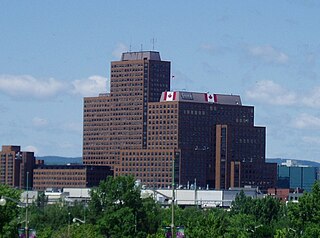
Crown–Indigenous Relations and Northern Affairs Canada is the department of the Government of Canada responsible for Canada's northern lands and territories, and one of two departments with responsibility for policies relating to Indigenous peoples in Canada.

Northwest Territories is a federal electoral district represented in the House of Commons of Canada. The electoral district covers the entire territory.
Ann Meekitjuk Hanson was the third commissioner of Nunavut. She served from April 21, 2005, until April 10, 2010. Hanson, like all Inuit born between the 1940s and the 1970s, was labelled with a disc number by the Government of Canada, which, in her case was E7-121.
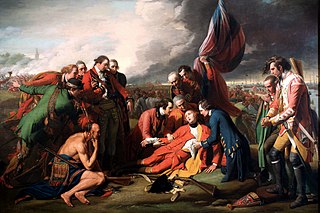
The history of the Northwest Territories covers the period from thousands of years ago to the present day. Prior to European colonization, the lands that encompass present-day Northwest Territories were inhabited for millennia by several First Nations. European explorers and fur traders began to explore the region since the late-16th century. By the 17th century, the British laid claim to both the North-Western Territory and Rupert's Land; and granted the Hudson's Bay Company a commercial fur trade monopoly over the latter region.
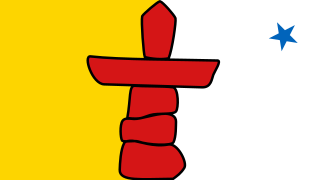
Nunavut is the largest and northernmost territory of Canada. It was separated officially from the Northwest Territories on April 1, 1999, via the Nunavut Act and the Nunavut Land Claims Agreement Act, which provided this territory to the Inuit for self-government. The boundaries had been drawn in 1993. The creation of Nunavut resulted in the first major change to Canada's political map in half a century since the province of Newfoundland was admitted in 1949.

Inuit are a group of culturally and historically similar Indigenous peoples traditionally inhabiting the Arctic and subarctic regions of North America, including Greenland, Labrador, Quebec, Nunavut, the Northwest Territories, Yukon (traditionally), Alaska, and Chukotsky District of Chukotka Autonomous Okrug, Russia. Inuit languages are part of the Eskimo–Aleut languages, also known as Inuit-Yupik-Unangan, and also as Eskaleut. Inuit Sign Language is a critically endangered language isolate used in Nunavut.
The following is an alphabetical list of topics related to Indigenous peoples in Canada, comprising the First Nations, Inuit and Métis peoples.
TERMIUM Plus is an electronic linguistic and terminological database operated and maintained by the Translation Bureau of Public Services and Procurement Canada, a department of the federal government. The database offers millions of terms in English and French from various specialized fields, as well as some in Spanish and Portuguese.

Inuit Nunangat refers to the land, water, and ice of the homeland of Inuit in Canada. This Arctic homeland consists of four northern Canadian regions called the Inuvialuit Settlement Region, the territory Nunavut (ᓄᓇᕗᑦ), Nunavik (ᓄᓇᕕᒃ) in northern Quebec, and Nunatsiavut of Newfoundland and Labrador.
Annie Brisset, a member of the Royal Society of Canada, is a Professor of Translation Studies and Discourse Theory at the School of Translation and Interpretation of the University of Ottawa, Canada.
Danica Seleskovitch was a French conference interpreter, teacher and prolific academic writer on translation studies. Among other career milestones, she founded the Interpretive Theory of Translation.
The Interpretive Theory of Translation (ITT) is a concept from the field of Translation Studies. It was established in the 1970s by Danica Seleskovitch, a French translation scholar and former Head of the Paris School of Interpreters and Translators. A conference interpreter herself, Seleskovitch challenged the view prevailing at the time that translation was no more than a linguistic activity, one language being merely transcoded into another. She described translation as a triangular process: from one language to sense and from sense to the other language. She coined the name Interpretive Theory of Translation and, even before Translation Studies became a field in its own right, introduced the process of translation into the vast area of cognitive research. In order to verify the first observations made as a practitioner, Seleskovitch went on to write a doctoral thesis. Soon, a handful of conference interpreters interested in research joined her at ESIT.

Simonie Michael was a Canadian politician from the eastern Northwest Territories who was the first Inuk elected to a legislature in Canada. Before becoming involved in politics, Michael worked as a carpenter and business owner, and was one of very few translators between Inuktitut and English. He became a prominent member of the Inuit co-operative housing movement and a community activist in Iqaluit, and was appointed to a series of governing bodies, including the precursor to the Iqaluit City Council.
References
- 1 2 Daigle, Madeleine (1993). "La traduction et l'interprétation dans les Territoires du Nord-Ouest". Meta. 38 (1): 108. doi: 10.7202/002444ar .
- 1 2 Daigle, Madeleine (1993). "La traduction et l'interprétation dans les Territoires du Nord-Ouest". Meta. 38 (1): 107. doi: 10.7202/002444ar .
- 1 2 3 Nicklen, Louise (1993). "Interpretation, Translation and Communication in Canada's Far North". Meta. 38 (2): 154. doi: 10.7202/003732ar .
- 1 2 3 Sammons, Susan (1993). "Challenges in Minority Language Programming in Canada's Eastern Arctic: The Training of Aboriginal Language Interpreter-Translators". Meta. 38 (1): 46. doi: 10.7202/004023ar .
- 1 2 Nicklen, Louise (1993). "Interpretation, Translation and Communication in Canada's Far North". Meta. 38 (2): 153. doi: 10.7202/003732ar .
- 1 2 Koenig, Sonja. "Interpreter training has been 'wiped off the face of the N.W.T,' say language advocates". cbc.ca. CBC News. Retrieved October 5, 2016.
- ↑ Howard, Philip G. (1993). "Language Initiatives". Meta. 38 (1): 92. doi: 10.7202/003143ar .
- ↑ Howard, Philip G. (1993). "Language Initiatives". Meta. 38 (1): 93. doi: 10.7202/003143ar .
- ↑ Daigle, Madeleine (1993). "La traduction et l'interprétation dans les Territoires du Nord-Ouest". Meta. 38 (1): 109. doi: 10.7202/002444ar .